When it comes time to update home appliances and fixtures, outdoor faucets are often put on the backburner. Despite their size, outdoor faucets can have a big impact on your home and yard, especially if they fail.
Outdoor faucets go by many names, such as hose bibs, spigots, sillcocks, and hydrants. Although used interchangeably, these terms actually refer to specific types of outdoor faucets—let’s figure out which variety is best for you.
Types of outdoor faucets
Hose Bibs
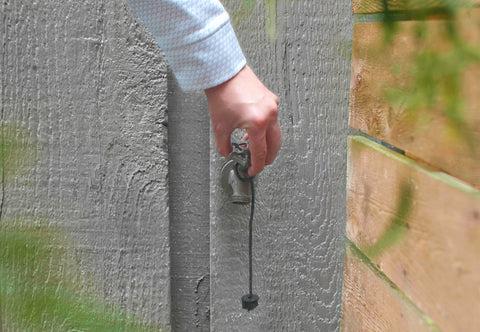 Brass hose bibs (also called spigots) are the most common type of outdoor faucet. These faucets generally utilize a classic wheel handle or quarter-turn handle to start and stop water flow. Hose bibs include standard garden hose threads and are short in length. The valve that allows water to flow through the faucet—and the entire faucet itself—all reside on the exterior of the house. These outdoor faucets are popular in the South where freeze-protection isn’t often a concern.
Brass hose bibs (also called spigots) are the most common type of outdoor faucet. These faucets generally utilize a classic wheel handle or quarter-turn handle to start and stop water flow. Hose bibs include standard garden hose threads and are short in length. The valve that allows water to flow through the faucet—and the entire faucet itself—all reside on the exterior of the house. These outdoor faucets are popular in the South where freeze-protection isn’t often a concern.
Freeze-Proof Sillcocks
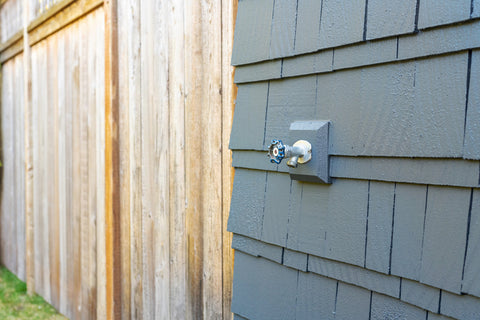
Similarly to most hose bibs, freeze-proof sillcocks are generally composed of brass. Unlike a hose bib, which solely resides on the exterior, a sillcock has a longer rod that extends into the wall of the house. The water valve for a sillcock is located at the end of this long rod where it connects to the piping within the wall. Because water stops at the back of the stem where it’s insulated, sillcocks are one of the go-to outdoor faucets for freeze protection. Sillcocks utilize standard threading for garden hoses and other attachments.
House Hydrants

Although some brands refer to their outdoor faucets as hydrants, the House Hydrant is a specific type of outdoor faucet manufactured by Aquor Water Systems. House Hydrants are made from 100% marine-grade stainless steel and provide up to 7x more freeze resistance than typical sillcocks, making them the most durable residential outdoor faucet on the market. Unlike other outdoor faucets, the House Hydrant utilizes a quick-connect system, allowing instant water access. Aquor’s hydrants are available in an array of stem lengths, and the connectors are compatible with standard garden hoses.
Factors to consider when choosing an outdoor faucet
Styles and Finishes
Your faucet’s aesthetic may be an important factor to consider when choosing which product you want to install. The majority of outdoor faucet systems are brass, while some faucets are plated with chrome. The overall aesthetic doesn’t vary much between typical outdoor faucet systems.
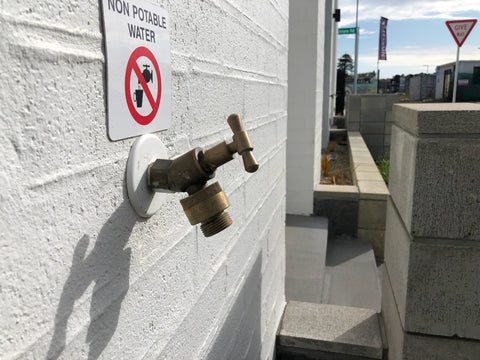
If you’re looking for a faucet with more visual appeal, we recommend Aquor’s House Hydrants, which have a sleek, modern look. House Hydrants lay flush, providing a low-profile aesthetic. Aquor also offers different cover finishes including brushed stainless steel, matte black stainless steel, and matte white stainless steel, giving you the option to customize your hydrant to fit the design of your home.

Ease of UseMost outdoor faucets utilize a wheel handle to turn the water on and off. If you’re interested in easier water access for hose bibs and sillcocks, consider quarter-turn handles. Simply turn the handle 90 degrees to engage water flow instead of endlessly twisting. As mentioned earlier, Aquor’s House Hydrants utilize a quick-connect system allowing homeowners to access water in seconds. Attach the provided connector to your garden hose then plug into the hydrant to engage water flow. When you’re done, simply unplug the hydrant. The valve automatically closes for instant winterization, eliminating the need for unsightly foam covers!
Backflow prevention
In many areas, plumbing code requires outdoor faucets to have a backflow prevention device like a vacuum breaker. Vacuum breakers prevent contaminated water from flowing back into the potable aka clean water supply.
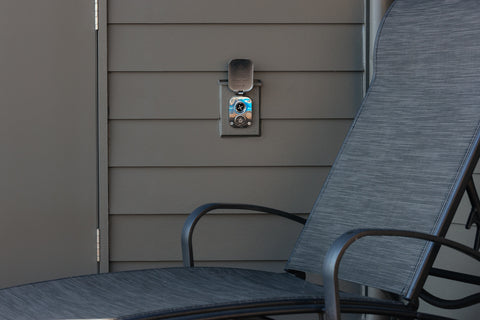
Some hose bibs and sillcocks come with built-in vacuum breakers and some do not. Make sure to have backflow prevention covered if this is a feature you need. House Hydrants are ASSE certified and include built-in backflow prevention.
Durability and Quality
Many homeowners tend to go the cheaper route with outdoor faucets, learning over time that the costs quickly add up—basic faucets often need frequent maintenance, repairs, or replacement. Although brass is generally a good metal for outdoor faucets, lower-quality brass can prove to be a hassle in the long run. It’s worth spending a little more money upfront to make sure you install a durable brass system. Most outdoor faucets come with a two to three year warranty.

Read more : 9 Ways on How to Keep a Dog Warm at Night: For Indoor and Outdoor Dog Care
Aquor’s House Hydrants are composed of 100% 316L stainless steel, a high-quality marine-grade metal. Stainless steel is regarded as one of the strongest building materials in the world, and Aquor’s warranties are the best in the industry. Hydrants have a limited lifetime warranty and connectors are backed for five years.
Installation
Installation is a key factor to consider when choosing which outdoor faucet may be right for your home. Every home is different, but homeowners should be aware of which installation elements are important to keep in mind. First, you need to figure out where the outdoor faucet will be installed. If you’re installing a sillcock or a House Hydrant, determine which stem length you will need. Depending on the type of siding you’re installing into, you may want a mounting solution.
Maintenance
Outdoor faucet maintenance typically becomes more important as time goes on. (Not unlike a car.) Standard faucet systems require more maintenance since there are several moving parts inside the faucet, including the internals of the handle and washers. The main issue arises when the threads begin to wear down, at which point you need to replace the entire unit. That’s right, threads are not easy to fix.
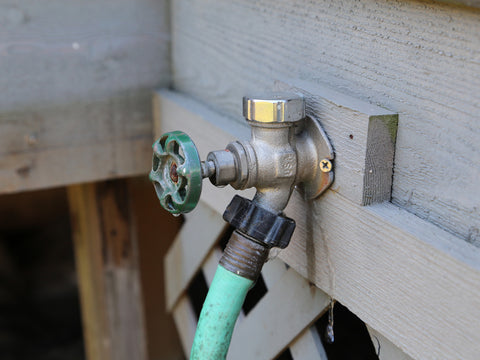 Aquor’s House Hydrants have minimal maintenance needs since the only moving part in the hydrant body is a stainless steel operating rod. The hydrants also utilize Viton O-Rings, which are aerospace-grade components commonly used in spacecrafts. House Hydrants are tested to withstand over 100,000 cycles without maintenance. That’s a lot of use!Regardless of which faucet you end up choosing for your home, if connected inside of a wall, we always recommend having an access panel for, surprise, quick access. We want to avoid cutting into a wall if possible! Having easy access to the plumbing connection makes potential future maintenance needs much easier and minimizes stress.
Aquor’s House Hydrants have minimal maintenance needs since the only moving part in the hydrant body is a stainless steel operating rod. The hydrants also utilize Viton O-Rings, which are aerospace-grade components commonly used in spacecrafts. House Hydrants are tested to withstand over 100,000 cycles without maintenance. That’s a lot of use!Regardless of which faucet you end up choosing for your home, if connected inside of a wall, we always recommend having an access panel for, surprise, quick access. We want to avoid cutting into a wall if possible! Having easy access to the plumbing connection makes potential future maintenance needs much easier and minimizes stress.
Summary
Live in an area that doesn’t freeze and want the most basic option? Go with a hose bib. Need standard freeze protection and don’t care about aesthetics? A sillcock is your best bet. Want the highest quality, frost-proof outdoor faucet that also looks good and comes with a limited lifetime warranty? Install a House Hydrant.

Have questions? Call (800) 458-1749 or email contact@aquorwatersystems.com.
More helpful info
Can I install an outdoor faucet myself?
How do I prevent outdoor faucets from freezing?
My outdoor faucet burst, what to do next?
Source: https://gardencourte.com
Categories: Outdoor

